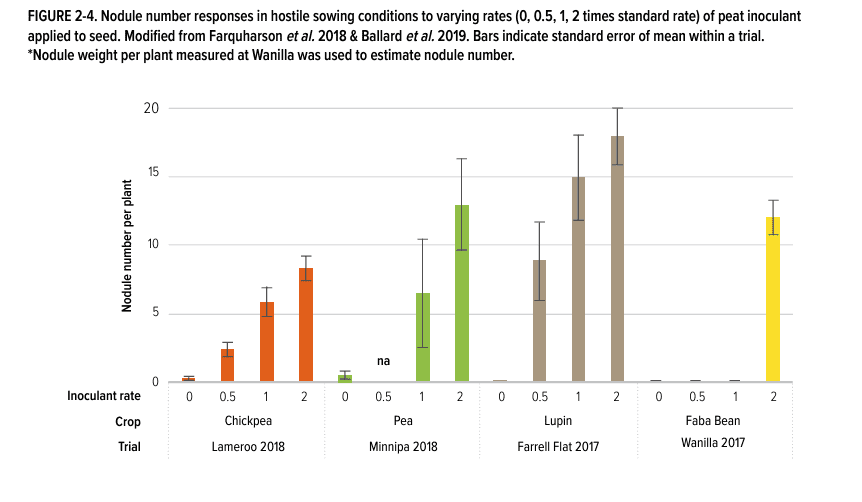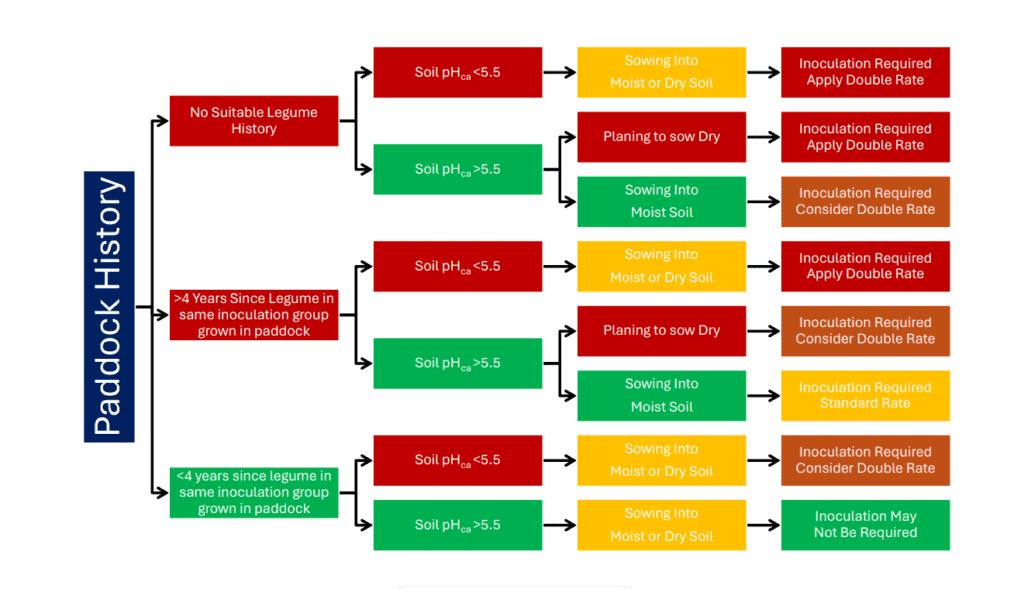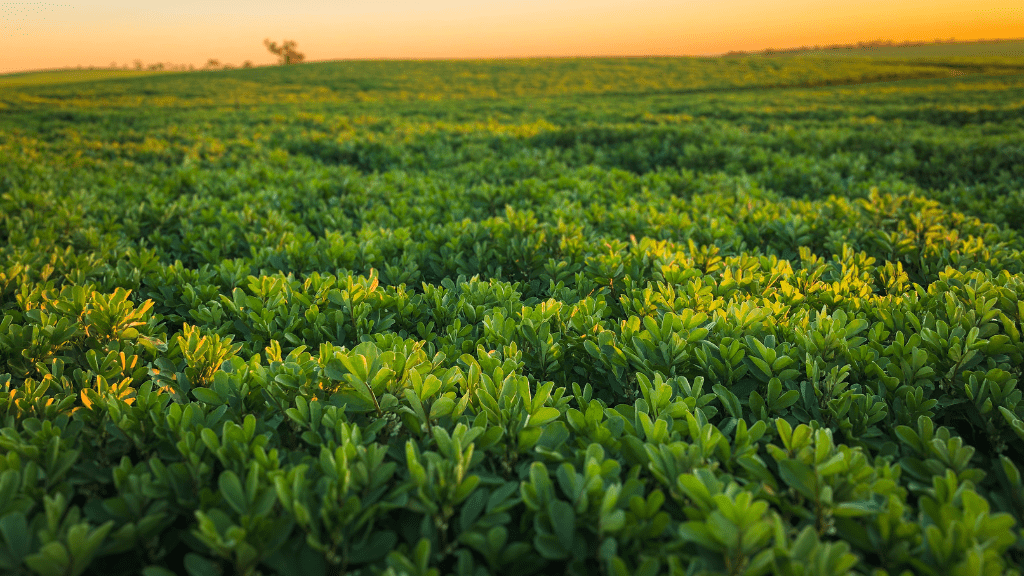The inoculation of legumes with Rhizobia bacteria is a well-known and valuable tool for producers for added nitrogen fixation. However, to allow this to happen, an adequate number of rhizobia must be present on the seed and in the soil surrounding it. The more rhizobia that survive on the seed and remain in the soil until plant germination, the better the chances are of good nodulation on the developing roots and, thus, higher nitrogen fixation.
What can you do to maximise your results? Well, there is a new strategy of double inoculation of legume seed. This involves the combined use of two different formulations, peat and concentrated vial. It is expected to increase plant performance through the increased rhizobia count on seeds and has been demonstrated in trials with improved yields, biomass, and nitrogen fixation.
Double inoculation of legume seed is particularly effective under adverse sowing conditions such as acidic soils or when dry sowing. By increasing the application rate of the peat inoculant on the seed, the likelihood of sufficient Rhizobia surviving up until germination is significantly improved. Research consistently shows that inoculating at double the recommended rate enhances nodulation.
See below table for inoculating from GRDC ‘Inoculating Legumes: Practice and Science’ – found here:
And also decision making guide, based off of GRDC Inoculating Practice and Science:


When applying double rates, it is important to note that you should use twice the inoculant in the same amount of water as for the single rate. It is also recommended to use the concentrated vial as a spike with the peat rather than double the rate of peat. This is because the concentrated vial is the highest loaded rhizobia formulation on the market and also the over application of peat inoculants can occasionally cause seeds to stick together, causing problems with flow through augers and seeders.
Understanding the different formulations is crucial. The peat formulation, a slurry treatment, contains moisture and nutrients that aid the survival of bacteria on the seed. Its high rhizobia count per gram of product makes double inoculation cost-effective. On the other hand, the concentrated vial, a soluble powder, is applicable through both liquid systems and on seed treatments, but not suitable for dry sowing.
If you are inoculating legumes it’s advisable to should try to sow within 24 hours after inoculation. Where peat inoculant is applied to seed coated with pesticides it is recommended to sow within six hours when possible, and five hours when freeze dried inoculants are used.
Ready to take your legume production to the next level? Contact our agronomists for more information.
This information has been gathered from GRDC and New Edge Microbials.

